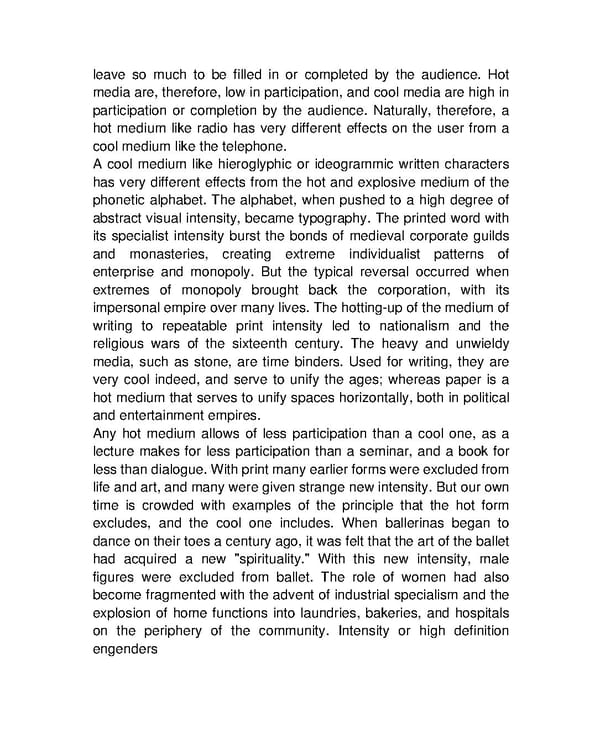leave so much to be filled in or completed by the audience. Hot media are, therefore, low in participation, and cool media are high in participation or completion by the audience. Naturally, therefore, a hot medium like radio has very different effects on the user from a cool medium like the telephone. A cool medium like hieroglyphic or ideogrammic written characters has very different effects from the hot and explosive medium of the phonetic alphabet. The alphabet, when pushed to a high degree of abstract visual intensity, became typography. The printed word with its specialist intensity burst the bonds of medieval corporate guilds and monasteries, creating extreme individualist patterns of enterprise and monopoly. But the typical reversal occurred when extremes of monopoly brought back the corporation, with its impersonal empire over many lives. The hotting-up of the medium of writing to repeatable print intensity led to nationalism and the religious wars of the sixteenth century. The heavy and unwieldy media, such as stone, are time binders. Used for writing, they are very cool indeed, and serve to unify the ages; whereas paper is a hot medium that serves to unify spaces horizontally, both in political and entertainment empires. Any hot medium allows of less participation than a cool one, as a lecture makes for less participation than a seminar, and a book for less than dialogue. With print many earlier forms were excluded from life and art, and many were given strange new intensity. But our own time is crowded with examples of the principle that the hot form excludes, and the cool one includes. When ballerinas began to dance on their toes a century ago, it was felt that the art of the ballet had acquired a new "spirituality." With this new intensity, male figures were excluded from ballet. The role of women had also become fragmented with the advent of industrial specialism and the explosion of home functions into laundries, bakeries, and hospitals on the periphery of the community. Intensity or high definition engenders
 Understanding Media by Marshall McLuhan Page 30 Page 32
Understanding Media by Marshall McLuhan Page 30 Page 32